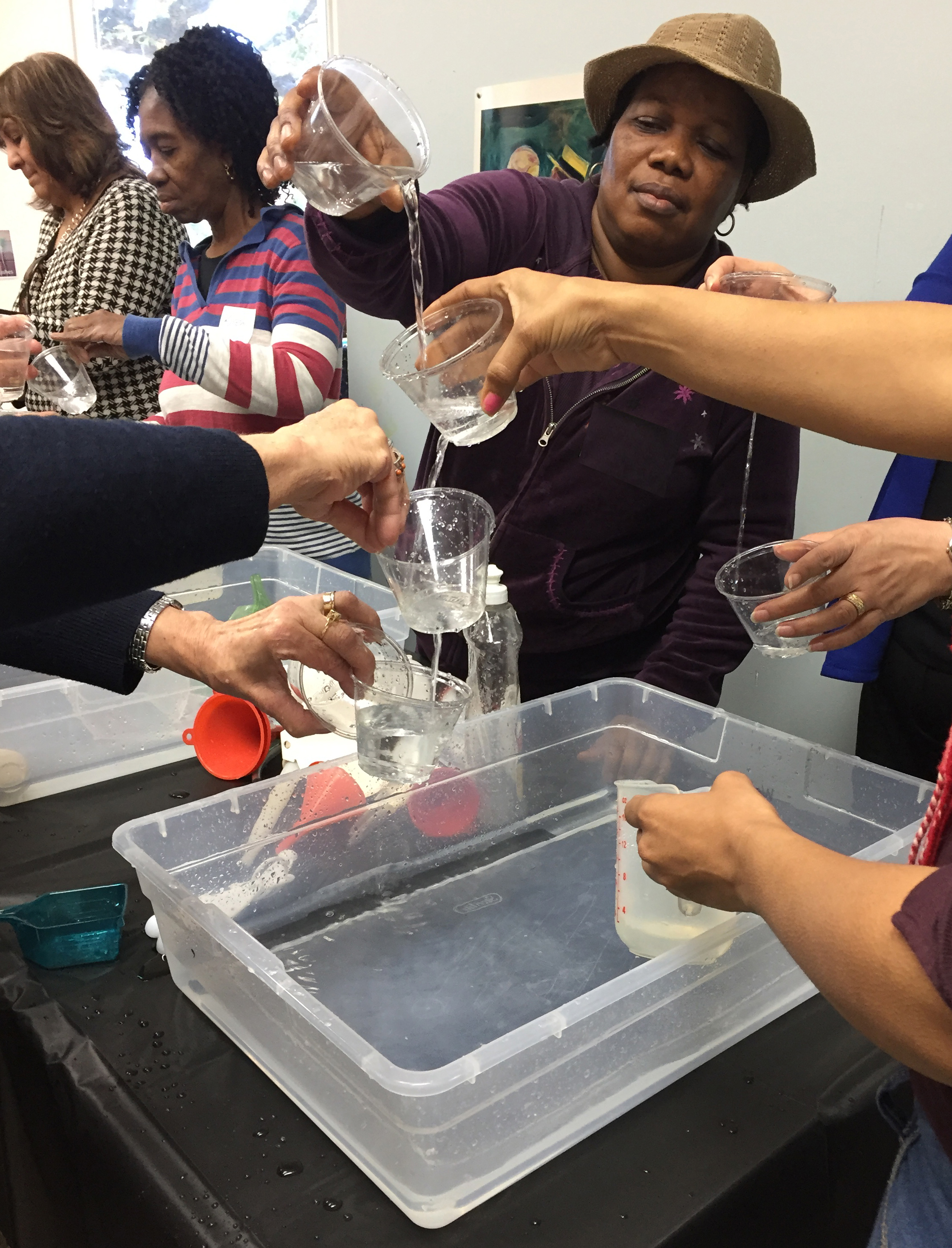Investigating water with Early Childhood educators
By Peggy Ashbrook
Posted on 2016-10-16
“At what age can a child begin science learning?” asked one participant at an early childhood education workshop on investigating the properties of water in a fun, scientific way using observation, documentation and reflecting on that work. The group answered the question, “As infants,” “My babies do,” and “At any age,” just as I put this photograph on the screen:

The educators work in diverse programs, from Head Start to Montessori to their own child care programs in their own homes. About half of the Early Childhood Care Education workforce cares for and teaches children outside of formal child care centers and preschools (NAS 2012 pg 114). I began my career in early childhood education as one of the educators who care for children in our homes, a family child care provider. At this workshop most of the educators were immigrants and their education was a varied as the countries of their birth, and we came together in our shared passion for understanding how young children learn. Everyone participated, making and playing with small drops of water (thank you Young Scientist series!); pouring, scooping and splashing water; using tubes, funnels and frames to create systems to move water; and discovering how cups with holes in various positions can also create systems (thank you UNI’s CEESTEM!). We talked about safety first, liquid/solid, noticed the “stickiness” of water, explored displacement and the force of moving water. It was fun! I’d like to claim that it was my skill as a presenter that kept the group engaged but it was their curiosity and desire to continually improve so they can be even better teachers for the children in their care.
As we worked, the group discussed their ideas about science concepts and shared how to help the parents of the children they care for understand how children learn through experiences. As always, I appreciate the generosity of this education community—they listen to each other, ask questions to get the most out of the session, share materials and their expertise, and help clean up at the end.

Reference
National Academy of Sciences (NAS). 2012. The Early Childhood Care and Education Workforce: Challenges and opportunities. Appendix B Summary of Background Data on the ECCE Workforce. Washington, D.C.: The National Academies Press.
Disclaimer: The views expressed in this blog post are those of the author(s) and do not necessarily reflect the official position of the National Science Teaching Association (NSTA).



